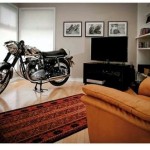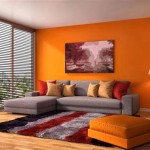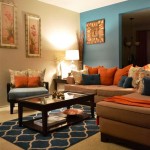How To Decorate a Room with a Slanted Ceiling
Rooms featuring slanted ceilings present unique design challenges and opportunities. These architectural details, often found in attics, converted lofts, and A-frame houses, can initially seem restrictive. However, with careful planning and a strategic approach to decor, a room with a slanted ceiling can become a cozy, stylish, and functional space. The key lies in understanding the room's limitations and leveraging its inherent character to create a visually appealing and practical interior.
Effective decoration of a slanted ceiling room revolves around maximizing space, enhancing natural light, and creating a sense of balance. This involves considering the placement of furniture, the choice of colors and textures, and the incorporation of appropriate lighting solutions. The following guide explores various techniques and strategies for transforming a slanted ceiling room into a comfortable and aesthetically pleasing environment.
Understanding the Room's Architecture
Before embarking on any decorating project, it's crucial to thoroughly assess the room's specific architectural features. This includes identifying the lowest points of the ceiling, the angles of the slopes, and the location of windows. Measuring the ceiling heights at different points is essential for determining furniture placement and ensuring adequate headroom. Note any existing architectural details, such as beams or dormer windows, as these elements can be incorporated into the overall design scheme.
The direction of the slant also influences the room's feel. A gentle slope might feel less restrictive than a steep one. Consider how the slant impacts the flow of movement within the room and identify any areas where space is limited. Understanding these nuances will inform decisions about furniture scale, layout, and overall design approach.
Furthermore, consider the room's natural light sources. Slanted ceiling rooms often have smaller or fewer windows compared to rooms with standard ceilings. Evaluate the amount of daylight the room receives and identify areas that might require additional lighting. Understanding the light patterns will guide the selection of paint colors and window treatments to optimize brightness and create a more inviting atmosphere.
Optimizing Space and Functionality
One of the primary challenges in decorating a slanted ceiling room is maximizing the usable space. Strategic furniture placement is paramount to avoid overcrowding and ensure comfortable movement. Low-profile furniture is generally recommended, as it helps to create a sense of openness and prevents the room from feeling cramped. Consider platform beds, low sofas, and modular shelving units that can be adapted to the room's unique dimensions.
Utilize the areas with lower ceilings for storage. Built-in shelving or cabinets can be custom-designed to fit snugly against the slanted walls, providing ample storage space without obstructing the room's functionality. Baskets, bins, and decorative boxes can also be used to organize items and keep the room clutter-free. Consider using these low spaces for activities that don't require standing, such as reading nooks or meditation corners.
Vertical space is another key consideration. Tall, narrow bookshelves or artwork can draw the eye upward and create the illusion of height. Mirrors can also be strategically placed to reflect light and create a sense of spaciousness. Avoid cluttering the floor with excessive decorations, as this can make the room feel smaller and more congested. Instead, focus on vertical accents that enhance the room's proportions.
Multifunctional furniture is also an excellent solution for maximizing space in a slanted ceiling room. Consider a sofa bed for guests, a coffee table with built-in storage, or a desk that can be folded away when not in use. Choose pieces that serve multiple purposes to minimize the amount of furniture required and create a more streamlined living space. Consider convertible furniture pieces that can change their function based on need.
Creating a Visual Balance Through Color and Texture
The choice of colors and textures plays a significant role in defining the ambiance of a slanted ceiling room. Lighter colors, such as whites, creams, and pastels, are generally recommended for the walls and ceiling, as they reflect light and create a sense of spaciousness. Darker colors can make the room feel smaller and more enclosed, although they can be used strategically as accent colors to add depth and visual interest.
Consider painting the slanted ceiling the same color as the walls to create a seamless transition and minimize the visual impact of the slope. This technique can help to make the room feel larger and more cohesive. Alternatively, paint the ceiling a lighter shade than the walls to create a subtle contrast and visually lift the ceiling. Avoid painting the ceiling a drastically different color, as this can accentuate the slant and make the room feel unbalanced.
Texture can be used to add visual interest and depth to a slanted ceiling room. Incorporate a variety of materials, such as wood, fabric, and metal, to create a layered and inviting space. Consider using textured wallpaper or paint to add dimension to the walls. Rugs can also be used to define different zones within the room and add warmth and comfort. Pay attention to the interplay of textures to create a harmonious and visually stimulating environment.
Introduce pops of color through accessories, such as pillows, throws, artwork, and decorative objects. These accents can add personality to the room without overwhelming the space. Choose colors that complement the overall color scheme and reflect your personal style. Consider using a cohesive color palette to create a sense of harmony and prevent the room from feeling cluttered or disjointed. Use color blocking techniques to highlight certain areas or features within the room.
Illuminating the Space Effectively
Adequate lighting is crucial for creating a functional and inviting slanted ceiling room. Given the limitations of natural light in many such spaces, a well-planned artificial lighting scheme is essential. Consider incorporating a combination of ambient, task, and accent lighting to create a balanced and versatile lighting solution.
Ambient lighting provides overall illumination to the room and helps to create a comfortable and welcoming atmosphere. Recessed lighting is a popular choice for slanted ceilings, as it provides a clean and unobtrusive source of light. Track lighting is another option that allows for flexible positioning of light fixtures along the ceiling. Chandeliers, pendants, or large floor lamps can also be used to introduce ambient light and add a decorative touch.
Task lighting focuses on illuminating specific areas for activities such as reading, working, or preparing meals. Desk lamps, floor lamps, and under-cabinet lighting are all examples of task lighting. Consider using adjustable lamps that can be positioned to provide optimal illumination for different tasks. Ensure that task lighting is bright enough to prevent eyestrain but not so harsh that it creates glare.
Accent lighting is used to highlight specific features or decorations within the room, such as artwork, architectural details, or decorative objects. Spotlights, wall sconces, and picture lights are all examples of accent lighting. Strategically place accent lights to draw attention to focal points and create visual interest. Use dimmers to control the intensity of the lighting and create a more relaxing atmosphere. Consider using light to define zones and separate areas within the room.

Decorating With Slanted Ceilings At Home Ashley

How To Decorate A Bedroom With Slanted Ceiling The Nordroom

How To Decorate Rooms With Slanted Ceilings Or Walls

How To Decorate Rooms With Slanted Ceilings Or Walls

How To Decorate A Low Sloping Ceiling Google Search Sloped Bedroom Slanted Design

Decorating With Slanted Ceilings At Home Ashley

17 Sloped Ceiling Bedroom Design Ideas Mabey She Made It

How To Decorate Slanted Ceilings

Great Design For Rooms With Sloped Ceilings

Sloped Ceilings In Bedrooms S Options Tips Ideas







